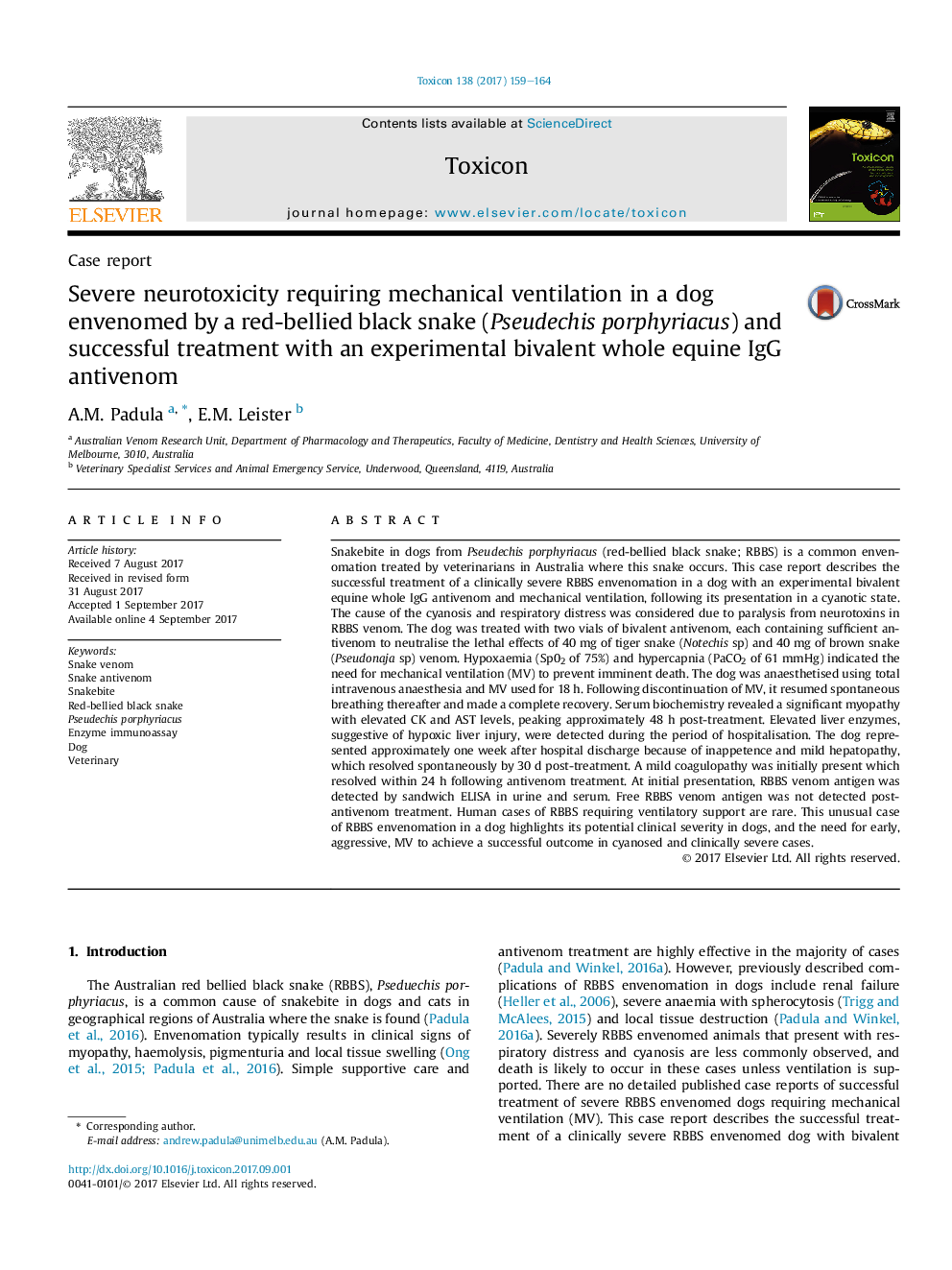| Article ID | Journal | Published Year | Pages | File Type |
|---|---|---|---|---|
| 5519200 | Toxicon | 2017 | 6 Pages |
â¢Respiratory paralysis in a dog following Pseudechis porphyriacus envenomation.â¢Mechanical ventilation used to 18 h to support respiration.â¢Mild hepatopathy following treatment.â¢Measurement of venom and antivenom in serum and urine using ELISA.
Snakebite in dogs from Pseudechis porphyriacus (red-bellied black snake; RBBS) is a common envenomation treated by veterinarians in Australia where this snake occurs. This case report describes the successful treatment of a clinically severe RBBS envenomation in a dog with an experimental bivalent equine whole IgG antivenom and mechanical ventilation, following its presentation in a cyanotic state. The cause of the cyanosis and respiratory distress was considered due to paralysis from neurotoxins in RBBS venom. The dog was treated with two vials of bivalent antivenom, each containing sufficient antivenom to neutralise the lethal effects of 40 mg of tiger snake (Notechis sp) and 40 mg of brown snake (Pseudonaja sp) venom. Hypoxaemia (Sp02 of 75%) and hypercapnia (PaCO2 of 61Â mmHg) indicated the need for mechanical ventilation (MV) to prevent imminent death. The dog was anaesthetised using total intravenous anaesthesia and MV used for 18 h. Following discontinuation of MV, it resumed spontaneous breathing thereafter and made a complete recovery. Serum biochemistry revealed a significant myopathy with elevated CK and AST levels, peaking approximately 48 h post-treatment. Elevated liver enzymes, suggestive of hypoxic liver injury, were detected during the period of hospitalisation. The dog represented approximately one week after hospital discharge because of inappetence and mild hepatopathy, which resolved spontaneously by 30 d post-treatment. A mild coagulopathy was initially present which resolved within 24 h following antivenom treatment. At initial presentation, RBBS venom antigen was detected by sandwich ELISA in urine and serum. Free RBBS venom antigen was not detected post-antivenom treatment. Human cases of RBBS requiring ventilatory support are rare. This unusual case of RBBS envenomation in a dog highlights its potential clinical severity in dogs, and the need for early, aggressive, MV to achieve a successful outcome in cyanosed and clinically severe cases.
